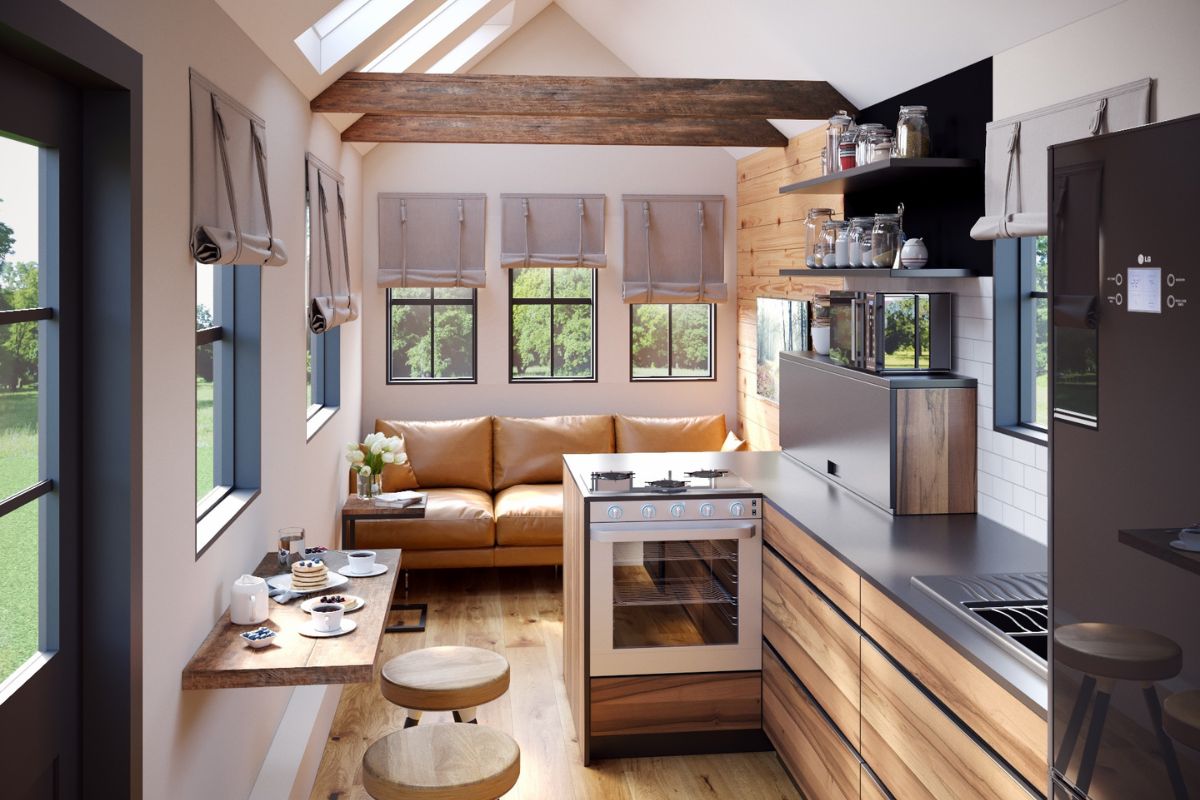When you're looking to rent or lease land for your tiny house, you'll need to navigate zoning laws that vary greatly by location and may limit where you can place your home. You should evaluate potential sites for accessibility, soil stability, and proximity to utilities, which will affect your living convenience and setup costs.
Negotiating lease terms is essential; aim for a balance of lease length and flexibility, and guarantee clear agreement on utilities and rent to avoid surprises. Properly preparing the land and managing utilities is also important for a successful setup. Exploring further can reveal more insights into each of these important steps.
Tip: If you’re still exploring options beyond your local area, browsing land for sale can also give you a useful comparison for prices and rural zoning flexibility.
Understanding Zoning Laws
Before you set your heart on a tiny house, it's important to understand the zoning laws that could impact your plans. Zoning laws vary widely depending on the location, and they dictate what you can build and where. You'll need to check with local planning offices or county records to get the specific regulations for your area.
In many places, zoning laws haven't caught up with the tiny house movement, leading to restrictions that can complicate your project. For instance, some zones might require minimum square footage for dwellings that far exceed the typical size of a tiny house. Others might only allow tiny houses in specific areas, like rural zones or designated communities.
Additionally, you should be aware of other legal considerations such as building codes, which address construction standards and safety issues. These are separate from zoning regulations and equally important. Compliance with both sets of regulations is mandatory.

Evaluating Potential Sites
Once you've familiarized yourself with the relevant zoning and building codes, your next step involves carefully evaluating potential sites for your tiny house. It's essential to take into account the physical characteristics of the land. Look for a level site with stable ground to avoid costly foundations or land modifications. You'll also want to check the soil condition—poor drainage can lead to problems down the line.
Accessibility is another key factor. Verify the site is reachable via roads that can accommodate your tiny house, whether it's on wheels or will be transported there. Reflect on the proximity to utilities like water, electricity, and sewage. If these aren't readily available, you'll need to factor in the cost and feasibility of installing them.
Don't overlook the importance of the surrounding environment. A site that offers privacy and scenic views might enhance your living experience considerably. However, also be aware of any potential hazards like flood zones or high wind areas.
Lastly, think about the community and amenities nearby. Living in a place that aligns with your lifestyle needs and values can make a big difference. Remember, you're not just choosing a piece of land; you're selecting your new neighborhood and home.
Negotiating Lease Terms
After you've pinpointed the perfect spot for your tiny house, it's crucial to plunge into negotiating lease terms that safeguard your interests and assure you're getting a fair deal. Start by understanding the length of the lease. You'll want a term that's long enough to provide stability but flexible enough to allow for changes in your situation. Discuss this openly with the landowner to find a mutually agreeable duration.
Next, tackle the rent amount. Research prevailing market rates for similar land leases in the area to confirm you're not overpaying. Don't hesitate to negotiate; landlords often expect it and may offer a better rate to secure a reliable tenant.
Also, clarify what's included in the lease. Are utilities part of the deal, or are they separate? Understanding these details upfront prevents surprises later on.

Preparing the Land
Now that you've secured favorable lease terms, it's time to focus on preparing the land for your tiny house. First, assess the terrain. You'll need to ascertain the ground is level, which might require grading or adding fill dirt. This step is essential as an uneven surface can lead to structural issues with your home in the future.
Next, consider the soil composition. If it's too sandy or has high clay content, you might face drainage problems. In such cases, bringing in topsoil or gravel can help stabilize the area.
Don't forget about clearing the land. Remove any large stones, debris, and vegetation that could interfere with your tiny house placement or foundation. Depending on local regulations and the nature of the vegetation, you might need a professional to handle this task, especially if large trees are involved.
Lastly, plan the access routes for construction and eventual living. Verify there's a stable path for heavy vehicles during the building phase and consider how you'll access your home daily. This might involve constructing a driveway or at least a reliable walkway.
Taking these steps will set a solid foundation for your tiny house, guaranteeing longevity and comfort.
Managing Utilities and Services
Having prepared your land, it's crucial to start managing utilities and services for your tiny house. Begin by determining your access to water, electricity, and sewage systems. If you're off-grid, consider alternatives like solar panels, composting toilets, and rainwater collection systems.

You'll need to work closely with local utility companies to guarantee you can connect to existing infrastructure. This might involve installing new lines or meters, which can incur significant costs. Check for any zoning regulations or permits required for these installations.
For water, you might tap into a municipal supply, dig a well, or set up a rainwater catchment system. Each option has its pros and cons regarding cost, sustainability, and availability.
Electricity can be accessed through the main grid, or you can explore renewable sources like solar or wind power. Connecting to the grid provides reliability, but renewable installations can offer independence from utility price hikes.
Conclusion
Now you've got the basics down! Remember, understanding local zoning laws is essential before you commit to a site. Always thoroughly evaluate potential sites for accessibility and suitability. When negotiating lease terms, aim for clarity and fairness—get everything in writing. Prepare the land properly to accommodate your tiny house, and don't overlook the importance of setting up utilities and services. Armed with this knowledge, you're ready to make informed decisions on renting or leasing land for your tiny home.






Share: